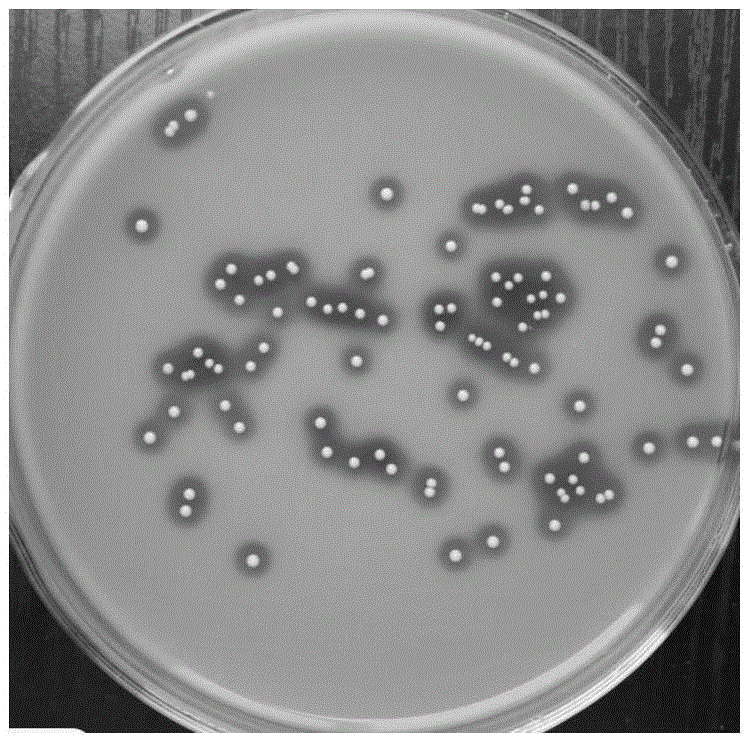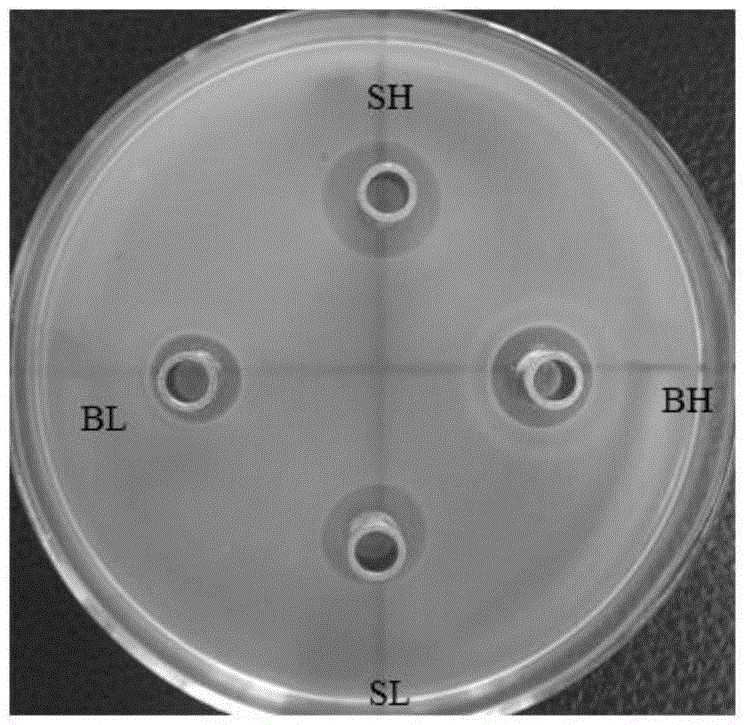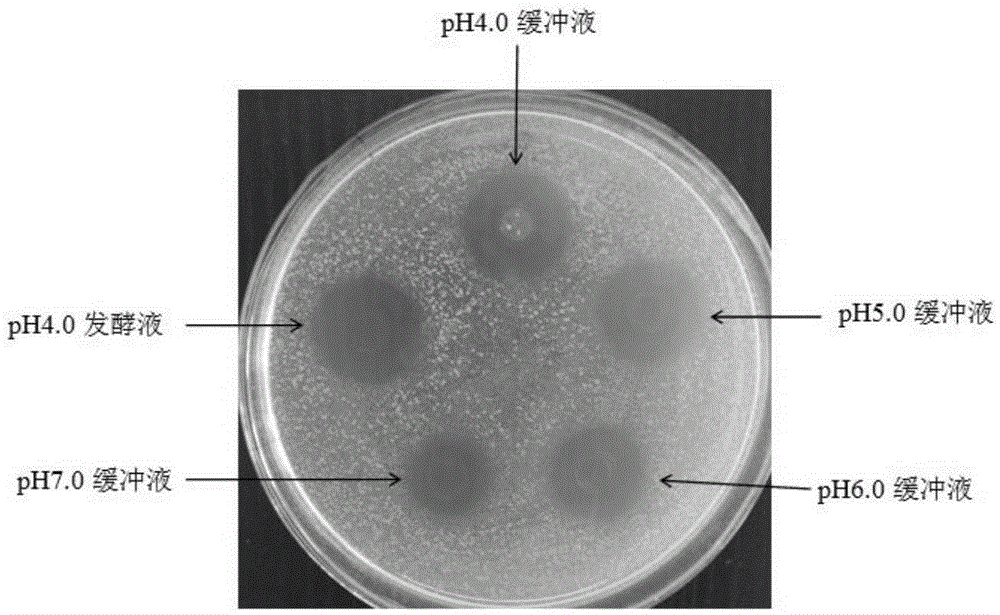Acid-yielding Enterococcus faecium, bacteriostatic microecological preparation and application thereof
A micro-ecological agent, the technology of Enterococcus faecium, applied in the field of microorganisms, can solve the problems of less synthesis, short residence time, and inability to fully exert the antibacterial effect, so as to improve the antibacterial ability, reduce the use of antibiotics, and promote health and sustainability. The effect of sustainable development
- Summary
- Abstract
- Description
- Claims
- Application Information
AI Technical Summary
Problems solved by technology
Method used
Image
Examples
Embodiment 1
[0039] Example 1 Isolation and identification of Enterococcus faecium (Enterococcus faecium)
[0040] (1) Isolation and purification of Enterococcus faecium
[0041] 1.1 Isolation and cultivation of strains
[0042] After the healthy chickens were killed and dissected, 1 g each of the small intestinal mucosa and intestinal contents were taken by aseptic method, and added to a vial filled with 9 mL of sterilized normal saline, mixed evenly and then diluted to a ratio of 10 -4 、10 -5 、10 -6 100mL of the diluted suspension was added dropwise to three MRS solid medium respectively, spread evenly with a glass rod, and then cultured anaerobically and aerobically at 37°C for 48h to observe the colony morphology and whether there were calcium-dissolving rings. Lactic acid bacteria colonies with calcium-dissolving rings were selected and inoculated into MRS liquid medium for streak separation and purification. Observe whether the broth becomes turbid, and if there is turbidity, sto...
Embodiment 2
[0061] The preparation of embodiment 2 bacillus subtilis producing bacteriocin
[0062] (1) Bacillus subtilis strains were inoculated in a fermenter with an inoculum amount of 0.5%, and cultured on a culture medium at 37° C. and 150 rpm for 50 h by a conventional method to obtain a fermented liquid. The culture medium comprises (weight ratio): 0.5% of corn flour, 3% of bean cake flour, 0.1% of fish meal, 1.0% of glucose, 1.59% of calcium carbonate, 0.05% of ammonium sulfate, 0.01% of dipotassium hydrogen phosphate, 0.01% of magnesium sulfate, Manganese sulfate 0.01%, 1 liter of pure water, pH 7.0-7.5;
[0063] (2) After the fermentation broth was centrifuged at 10000r / m for 20min, the supernatant was taken, and ammonium sulfate solid powder was slowly added to the supernatant for salting out, and stirred while adding, until the saturation reached 80%, and then at 4°C Stand still for 12 hours, then centrifuge at 12000 r / m for 30 minutes at 5°C, discard the supernatant to obtai...
Embodiment 3
[0064] The performance detection of embodiment 3 bacteriocin antibacterial
[0065] (1) Antibacterial spectrum of bacteriocins
[0066] Take 1 g of the prepared bacteriocin precipitate and add it into 5, 10, and 20 mL of nutrient broth respectively to make 3 nutrient broths (20%, 10%, and 5%) containing different bacteriocin concentrations. As a control, the nutrient broth was inoculated with Salmonella typhi (Salmonellatyphi, CVCC2212, National Veterinary Culture Collection), Staphylococcus aureus (Staphylococcusaureus, CVCC1882, National Veterinary Culture Collection), Escherichia coli K88 (EscherichiaColi, CMCC44742, China Medical Bacteria Collection Management Center) and Escherichia coli 0157 (EscherichiaColi, purchased from the China Veterinary Drug Administration), the inoculum was 5% of the culture solution, placed at 37 ° C, 5% CO 2 Cultivate in the incubator for 24h.
[0067] The number of colonies in each group of cultures was detected, and the results are shown i...
PUM
 Login to View More
Login to View More Abstract
Description
Claims
Application Information
 Login to View More
Login to View More - R&D
- Intellectual Property
- Life Sciences
- Materials
- Tech Scout
- Unparalleled Data Quality
- Higher Quality Content
- 60% Fewer Hallucinations
Browse by: Latest US Patents, China's latest patents, Technical Efficacy Thesaurus, Application Domain, Technology Topic, Popular Technical Reports.
© 2025 PatSnap. All rights reserved.Legal|Privacy policy|Modern Slavery Act Transparency Statement|Sitemap|About US| Contact US: help@patsnap.com



